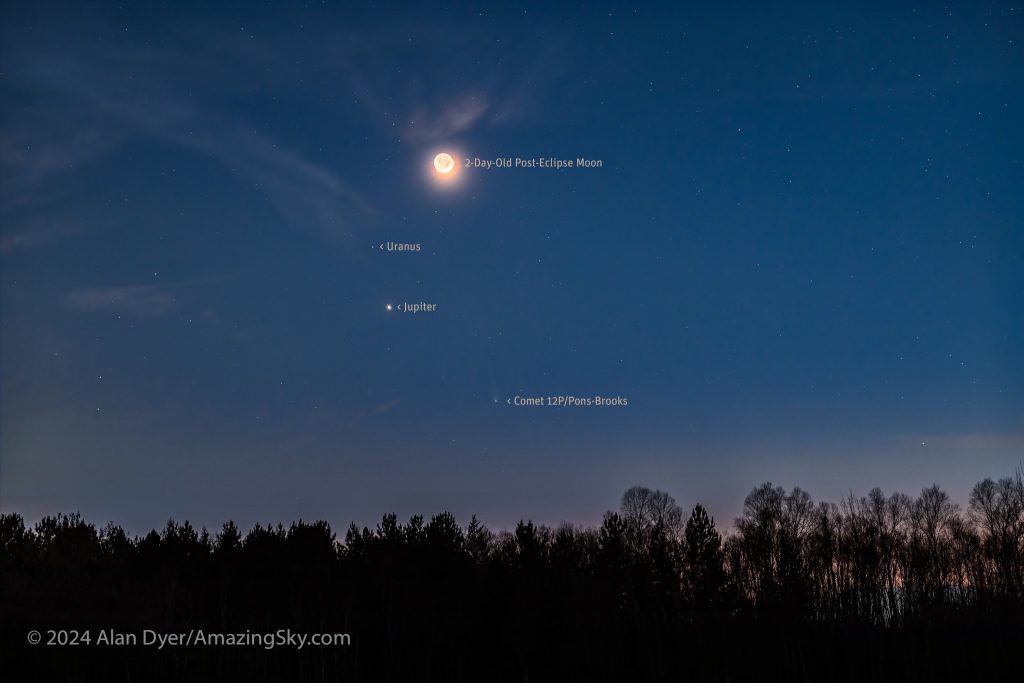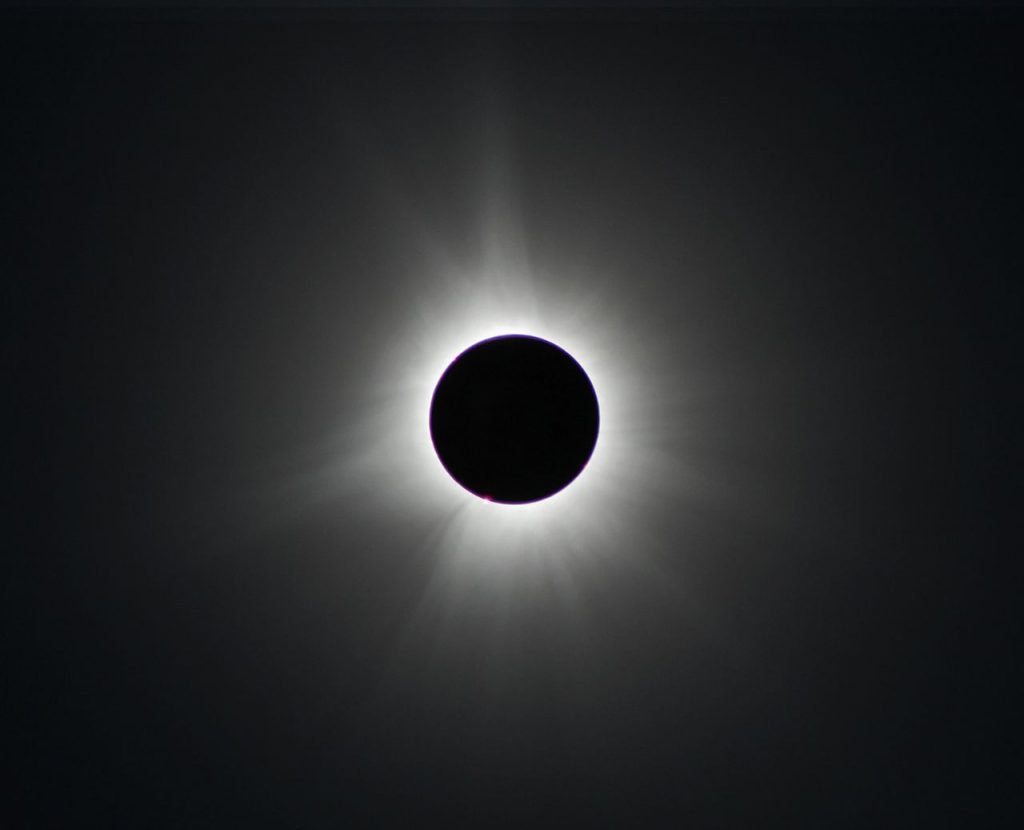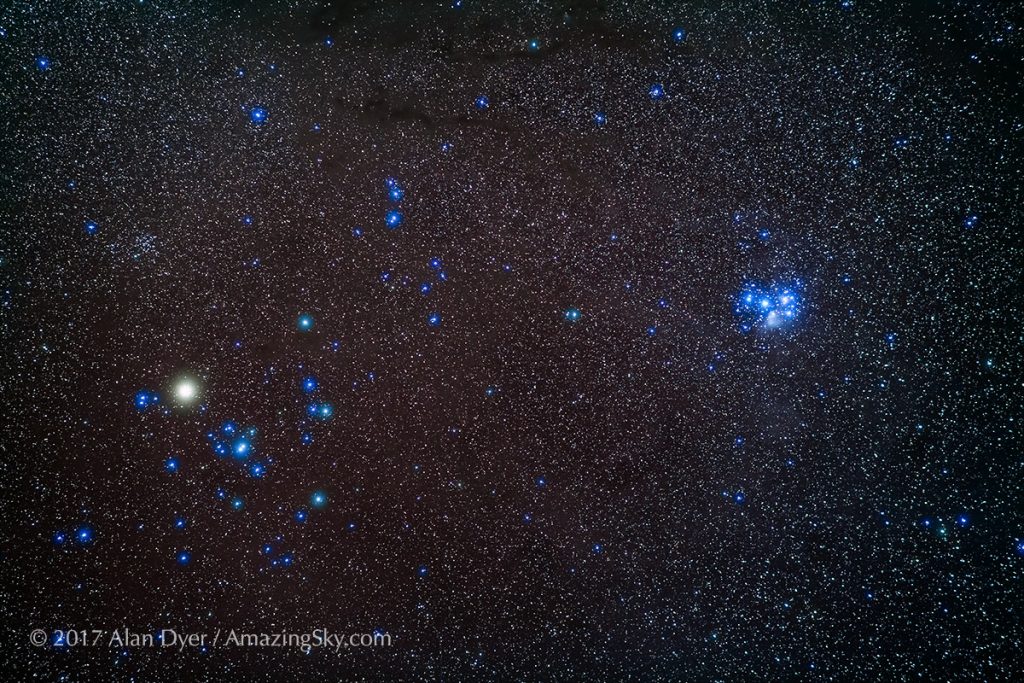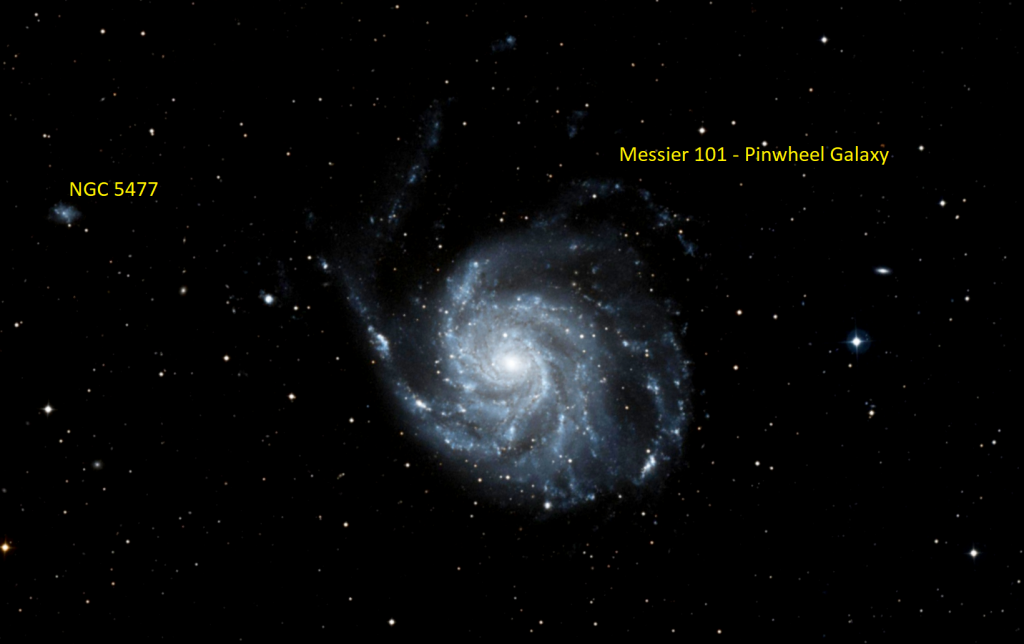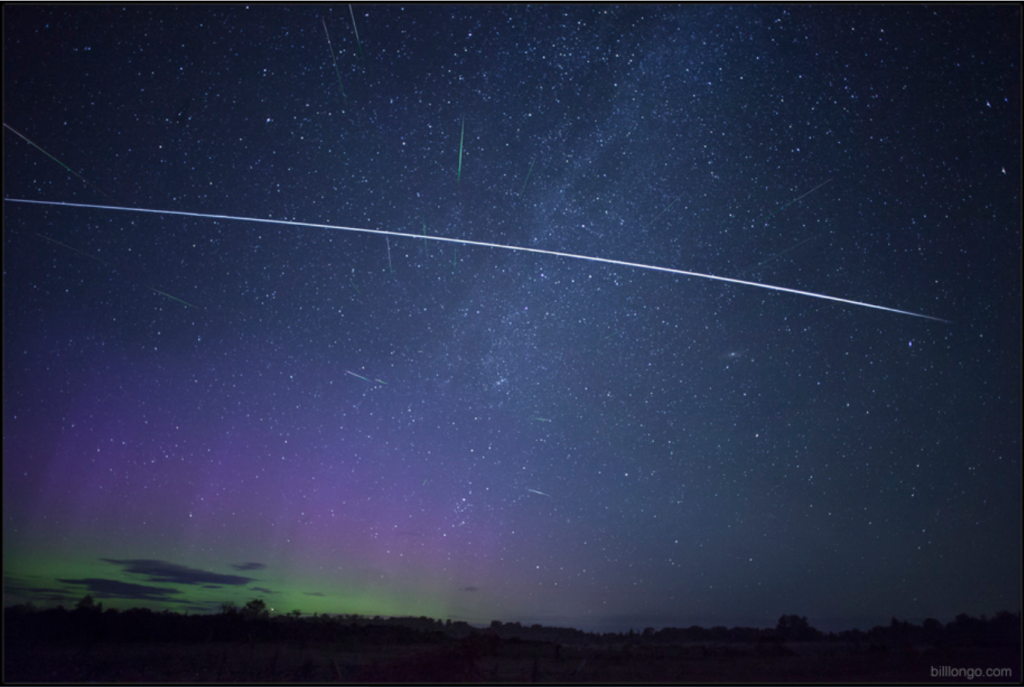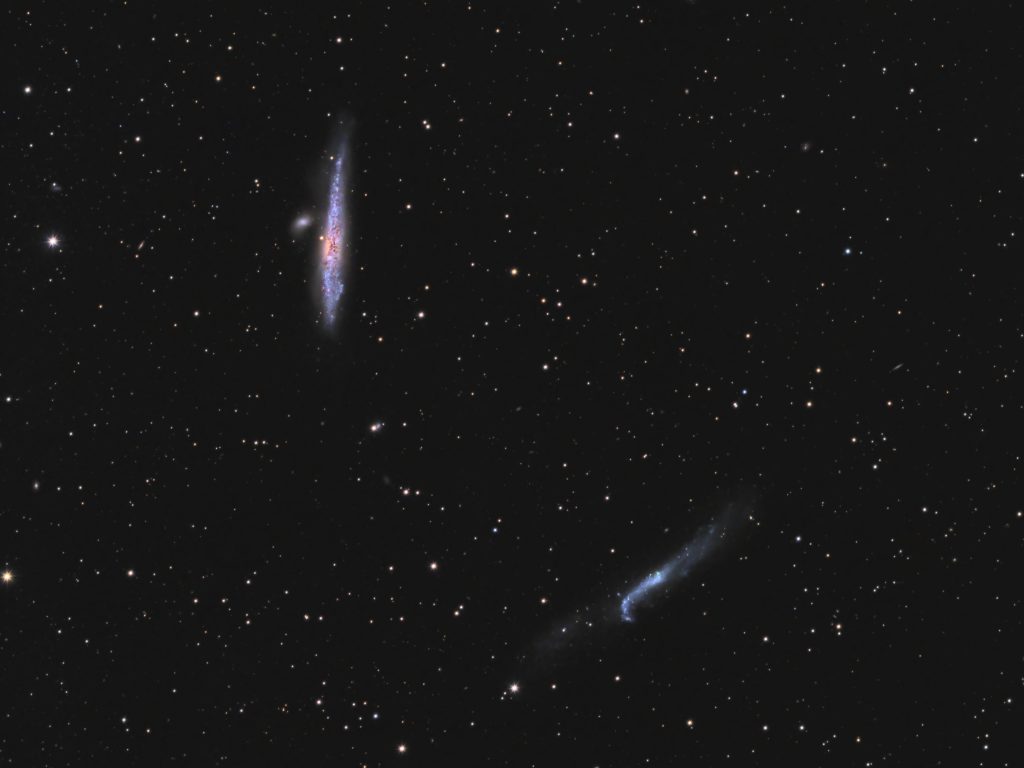The Full Pink Moon Limits Lyrids and Spears Scorpius While Mars and Saturn Rise Early and Jupiter Exits Evening!
On April 10, 2024, my friend Alan Dyer captured this terrific image of the young moon (two days after the solar eclipse) shining above Uranus and Jupiter with moons. Comet 12P/Pons-Brooks is below them. The comet’s tail is aimed upwards away from the sun, which had recently set below the horizon. Follow Alan on FaceBook…
Read more
